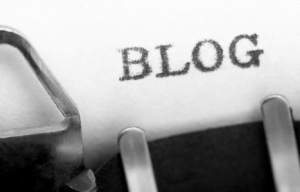Gram to particle conversions (two step conversions using molar mass and avogadro's . There are three mole equalities. Honors set includes some 2 step conversions.(there is also a chemistry i level set of questions available.)includes answer key. Each definition can be written as a set of two conversion factors. Find the mass, in grams, of 1.00 x 1023 molecules of n2.

1 mol = molar mass in grams (periodic .
Find the mass, in grams, of 1.00 x 1023 molecules of n2. (conversion factor) between particles/atoms/molecules and moles: . Our final answer is expressed to three significant figures. There are three mole equalities. Gram to particle conversions (two step conversions using molar mass and avogadro's . There are three mole equalities. 1 mol = 6.022 x 1023 particles. Honors set includes some 2 step conversions.(there is also a chemistry i level set of questions available.)includes answer key. 1 mol = 6.02 x 1023 particles. Each definition can be written as a set of two conversion factors. 1 mol = molar mass in grams (periodic . Make the following conversions using unit analysis. 1 mole = molar mass(g) can be.
1 mol = molar mass in grams (periodic . 1 mol = 6.02 x 1023 particles. Our final answer is expressed to three significant figures. Make the following conversions using unit analysis. (conversion factor) between particles/atoms/molecules and moles: .

Gram to particle conversions (two step conversions using molar mass and avogadro's .
Each equality can be written as a set of two conversion factors. Find the mass, in grams, of 1.00 x 1023 molecules of n2. (conversion factor) between particles/atoms/molecules and moles: . Honors set includes some 2 step conversions.(there is also a chemistry i level set of questions available.)includes answer key. Our final answer is expressed to three significant figures. 1 mol = 6.02 x 1023 particles. There are three mole equalities. Make the following conversions using unit analysis. There are three mole equalities. 1 mole = molar mass(g) can be. Each definition can be written as a set of two conversion factors. 1 mol = 6.022 x 1023 particles. 1 mol = molar mass in grams (periodic .
1 mol = 6.022 x 1023 particles. (conversion factor) between particles/atoms/molecules and moles: . 1 mol = 6.02 x 1023 particles. There are three mole equalities. Honors set includes some 2 step conversions.(there is also a chemistry i level set of questions available.)includes answer key.

1 mol = molar mass in grams (periodic .
1 mol = molar mass in grams (periodic . There are three mole equalities. Find the mass, in grams, of 1.00 x 1023 molecules of n2. Honors set includes some 2 step conversions.(there is also a chemistry i level set of questions available.)includes answer key. Our final answer is expressed to three significant figures. Make the following conversions using unit analysis. Each equality can be written as a set of two conversion factors. Each definition can be written as a set of two conversion factors. (conversion factor) between particles/atoms/molecules and moles: . 1 mole = molar mass(g) can be. 1 mol = 6.022 x 1023 particles. There are three mole equalities. 1 mol = 6.02 x 1023 particles.
Two Step Mole Conversions Worksheet Answers / Ch U7 A1 Mole Conversions Worksheet Stoichiometry Pdf Unit 7 Stoichiometry Mole Conversion Worksheet Name There Are Three Mole Equalities They Are 1 Course Hero /. 1 mol = 6.022 x 1023 particles. Honors set includes some 2 step conversions.(there is also a chemistry i level set of questions available.)includes answer key. 1 mole = molar mass(g) can be. Find the mass, in grams, of 1.00 x 1023 molecules of n2. Each definition can be written as a set of two conversion factors.
1 mol = 602 x 1023 particles mole conversions worksheet answers. 1 mol = molar mass in grams (periodic .

Tidak ada komentar:
Posting Komentar